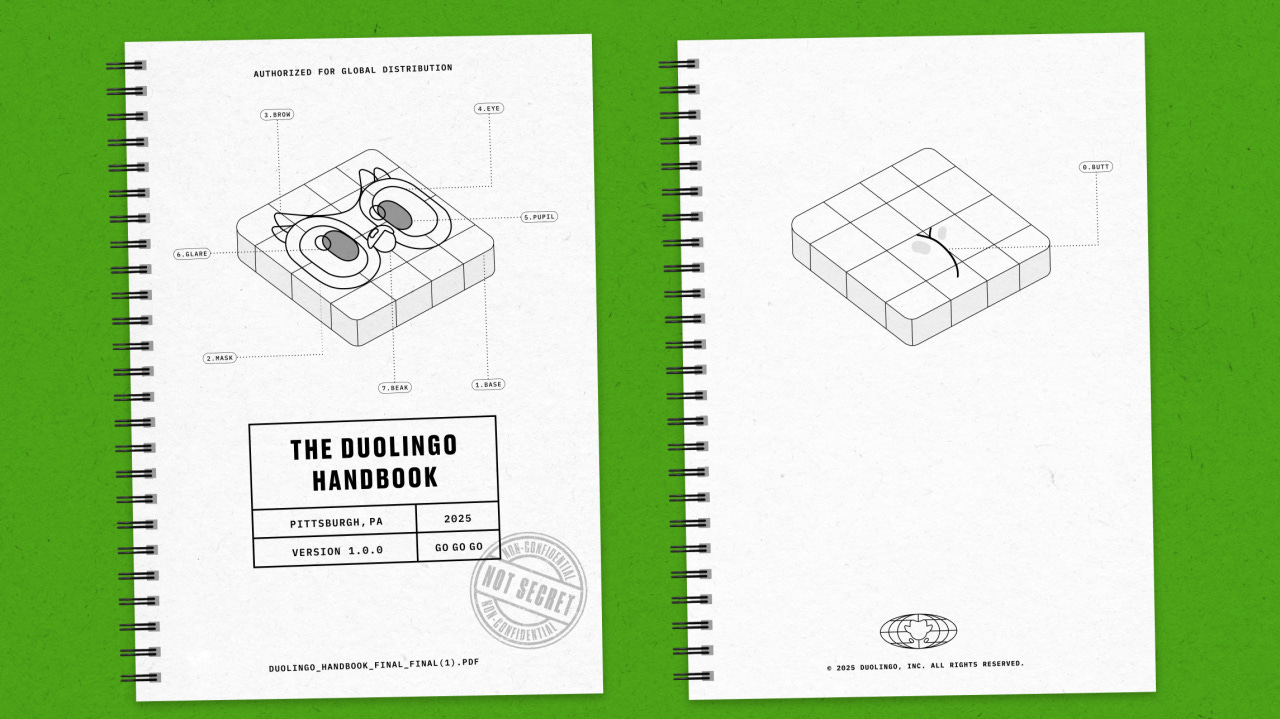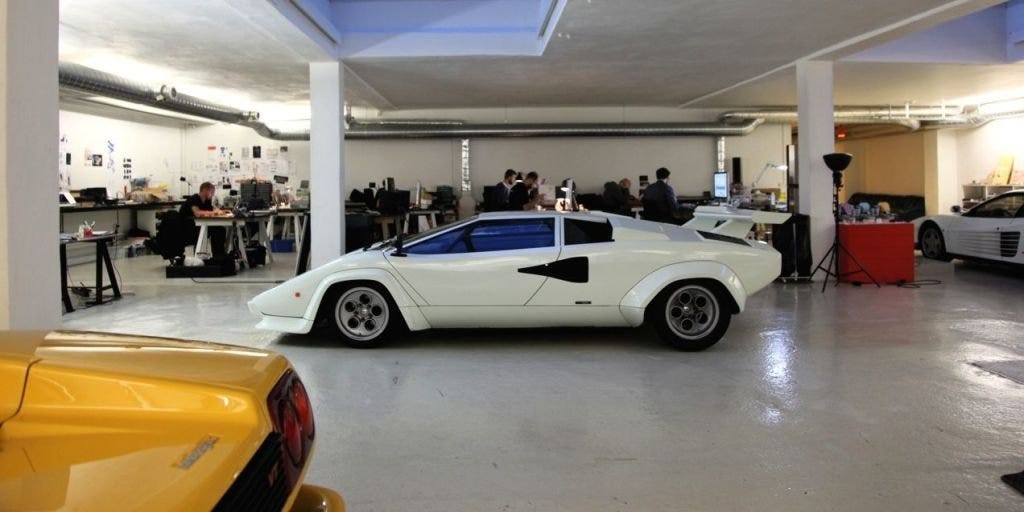How to make something great
PMF or Die | Non-tech vibe coding guide | Duolingo Handbook | Starlink interactive map | New software products + loads more…
🆕 Personal Updates
I’ve been trying to write this issue for the past 8 weeks and admittedly life has got in the way.
I won’t go into the details, but it eventually got to the point where I felt like I was forcing myself to write and as experience has taught me, creativity doesn’t work that way.
So I sat on it, didn’t publish during February for the first time since I started writing this newsletter and you know what, nothing bad happened.
Sure a few readers and friends reached out to check I was still alive but the anxiety of publishing every month quickly wore off and then, my old friend creativity came back and here we are.
Right, let’s get to it - time for this month’s roundup 👇
🔥 Last editions top link: Apple Notes-themed personal website
🔗 Hyperlinks
Starlink map
Whilst I knew Starlink has the largest constellation of lower Earth orbit satellites, I had no idea how many, and even if I did, I wouldn’t have appreciated how to visualise it, until I discovered this fantastic site and live visual created by Will Depue - an engineer at OpenAI.
With almost 6k satellites orbiting the planet, it’s a spectacle to visualise. The site is loaded with mind-bending facts.
For the nerds out there, the site was built with next.js + vercel kv, three.js for 3d visualizations, and satellite.js for orbital calculations.
The Duolingo Handbook
Nope, it’s not a book on linguistics, but the company handbook, which created an app with 113 million monthly active users. This handbook distils 14 years of product craft and relentless discipline into a short and inspiring guide. I personally found it a fascinating read, not because it contains contrarian approaches or radical new processes and principles, because it doesn’t. Instead, it contains somewhat well-known principles which have been executed extremely well and pedantically thoroughly.
Duolingo is the sum of thousands of experiments. The faster we can run experiments—successful or not—the faster we can improve the app and advance our mission.
They move fast without breaking things (take that Zuck), balancing fun with effectiveness. Great products aren’t built on theory. They emerge from tight feedback loops, high standards, and a deep respect for the user experience. Duolingo’s approach reminds us that execution is everything. One of the best takeaways is their approach to decisive prioritisation and rapid experimentation - something which is much easier said than done in my experience.
The handbook is packed with insights, stories, and principles that you can use for your own work or team. Whether you’re a founder, creative, aspiring CEO, or just someone who loves learning about how companies work – this handbook is for you.
🎁 Bonus content: The founder of Duolingo was also the inventor of the frustrating CAPTCHA authentication. Check out this fascinating story.
PMF or die
What sounds like a drop from MSCHF is in fact a real experiment to show what's possible when you lock 2 young and hungry makers in a New York apartment with $25K, an internet connection, and just 90 days competing to build a $1m dollar in revenue business.
And the best part? you can watch this live 24/7. It’s like Big Brother for nerds.
In the left corner, we have Blake Anderson. He’s built various apps using AI and apparently netted $25m in revenue to date. In the left corner, we have Patrick Callaway. He’s a full-time indie hacker having built a variety of projects and businesses.
At the time of drafting this (day 56), Patrick has freed himself of the cage, leaving just Blake alone for the remaining days. Turns out locking to young guys who think they are both alpha’s isn’t going to work.
A non-technical guide for how code works
As ‘vibe coding’ seems to be gathering pace, increasingly more non-technical folks are building software with LLMs. But firstly, what is vibe coding?
The concept refers to a coding approach that relies on LLMs, allowing programmers to generate working code by providing natural language descriptions rather than manually writing it.
My engineering friends wince at the idea of ‘vibe coding’ - citing concerns such as no security, not being scalable, lack of creativity, knowledge blah, blah, blah…..
But who are they to judge - I say let e’m vibe away, enjoy the process, make something fun, break stuff, fix it and hopefully learn something in the process. Who knows, in a not-so-distant future we will all be vibe coding.
This leads me to Ben Tossell’s latest post. For non-tech folks looking to have a shot at building something with LLMs - it’s certainly worth getting a primer on what all the code generated means and how it all comes together to form a functioning app. Ben’s done a fantastic job getting this non-technical guide, complete with Loom video tutorial.
📓 Articles
How to make something great
This is one of those essays you read a few times to absorb its wisdom save it somewhere easily accessible and remind yourself to read it frequently.
In this essay, Ryo Lu (Designer at Cursor), explores all the common misconceptions and mainstream advice when creating ‘something’. His poetic advice is short but packs a punch. Just read the below passage:
You begin with something half-seen and half-known, build with others who share your faith, wander widely before settling on a direction, learn by doing rather than by empty theorizing, protect nascent ideas from premature judgment, and persist with agility, refusing to sacrifice excellence on the altar of speed. Each of these principles, taken alone, is just a note. Together, they form a chord whose resonance can reshape the world.
You can’t read that and not feel inspired.
As a side note, I found this post when I initially discovered Ryo Lu’s playful experiment ‘ryOS’ - a cloud OS built which runs entirely in a nostalgic web browser which mimics the look and feel of an old-school Mac desktop OS. It includes apps like a soundboard, a web browser (with a time-travel feature), a chat interface with an AI named Ryo, a terminal for command-line interaction, a virtual PC running DOS and Windows 95 and a text editor with AI transcription to name just a few features.
Ryo built it using Cursor, stating that 95% of the code was written by AI. Give it a shot.
📱 Products
Lovable | Idea to app in seconds
A16z just released a fresh new market map and report for app/website AI builder tools and while you might notice some familiar faces on the list, there are a few notable new kids on the block who are AI native and pretty impressive.
Two of which I’m particularly interested in are Bolt and Lovable.
This new breed of AI native no-code tooling is really starting to show some impressive results.
However, as the saying goes, this will be the worst version of these tools and you can expect step-change improvements.
I had a shot of Lovable in its early beta and perhaps my expectations were too high but it failed to impress me. Flash forward a few months and I’m seriously impressed.
Simply type what you are looking to build and watch your web app come to life. A handy new feature allows you to select elements which you want to edit and then describe the change. Lovable also integrates with Supabase, a platform that provides tools for building backend systems, including database storage, authentication, and cloud functions.
This new breed of AI no-code builders are moving at breakneck speed with improvements, however, one hurdle they need to jump is helping users debug issues when their apps become complex.
🤡 Fun fact: Lovable is the fastest-growing startup in Europe’s history, reaching 16m in ARR in just two months.
🎁 Bonus content: Check out Lenny’s podcast for a great interview with Anton Osika (Founder and CEO of Lovable) to learn what it’s like to catch lightning in a bottle.
🧢 Bonus merch: Want to virtue signal your vibe coding credentials to the world? Check out Pieter Levels vibe coding swag store (use promo code ACCELERATE FOR 20% OFF).
Supercut | Record.Share.Done
I’ve said it before and I’ll say it again, async communication is an underrated strategy. Personally, I think 90% of meetings can be done via async video.
Everyone’s calendars are full these days and we suffer from ‘Zoom fatigue’. Once you do eventually find a time you need to navigate the pleasantries and fluff and before you know it a 10-minute conversation leads to an hour. No more I say.
With Loom being absorbed by Atlassian it’s time to find a new tool. Recently the co-founder of Typeform (David OKuniev) stepped down and built a new lab called Float to incubate new design-lead product concepts. This week, after 6 months in stealth mode they launched their first product, Supercut.
Supercut is a video-based communication tool. Click, record and share a link to your video. It’s available as a Chrome extension or Mac app and comes with a bunch of handy features. Personally, I’m really liking the CTA feature which lets you add a button and link. Also, it’s stupidly fast. I’m in.
👾 Friends of the Creator Club
If I was to call Gabrielle a friend she would be slightly insulted. She is in fact my partner in crime and mother to our child. Is this a biased shout-out? absolutely, but trust me it’s worth a listen.
Gabrielle is the creator of Bitesize Bodacious Babes Podcast: a podcast by women in music & tech. The BBB podcast looks to demystify, inspire, and celebrate women in the industry. In her latest episode, she speaks with Ally Watson, Founder & CEO of Code Like a Girl.
You can check it out on Spotify or Apple.
🐽 Other links to consume
🔮 Flashback
Studying history to learn the future
This month we are going back to 2009. The image below isn’t a vintage supercar museum or art gallery, it’s a bloody office. Teenage Engineering’s old office to be specific.
Okay, some background might help here. Jesper Kouthoofd (CEO & Co-founder) made his money in the fashion business. He and some friends started buying and working on classic and collectable cars as a hobby and eventually got to the point where they bought a garage to work on them together.
It was from here that Teenage Engineering was born.
It’s a nice way to mix your life, your hobbies, and your work. If you get tired of doing your website or whatever then you can tinker a little bit with the car or polish it or do something else - Jesper Kouthoofd
If you made it this far, hit reply or jump into the comments and tell me what you thought of this edition. Was this 🔥 or 🗑. I read every response 👀
🚀 Advertise on this newsletter to get in front of 9,000+ curious minds
💬 Need some advice on building products. Grab some time with me.
🧪 Looking to validate an idea for a new business or side project? Check this out
If you liked this issue and fancy some free goodies, consider referring someone to the newsletter and get rewarded for doing so.
Until next the next issue,
Sam | @thisdickie 👨💻






